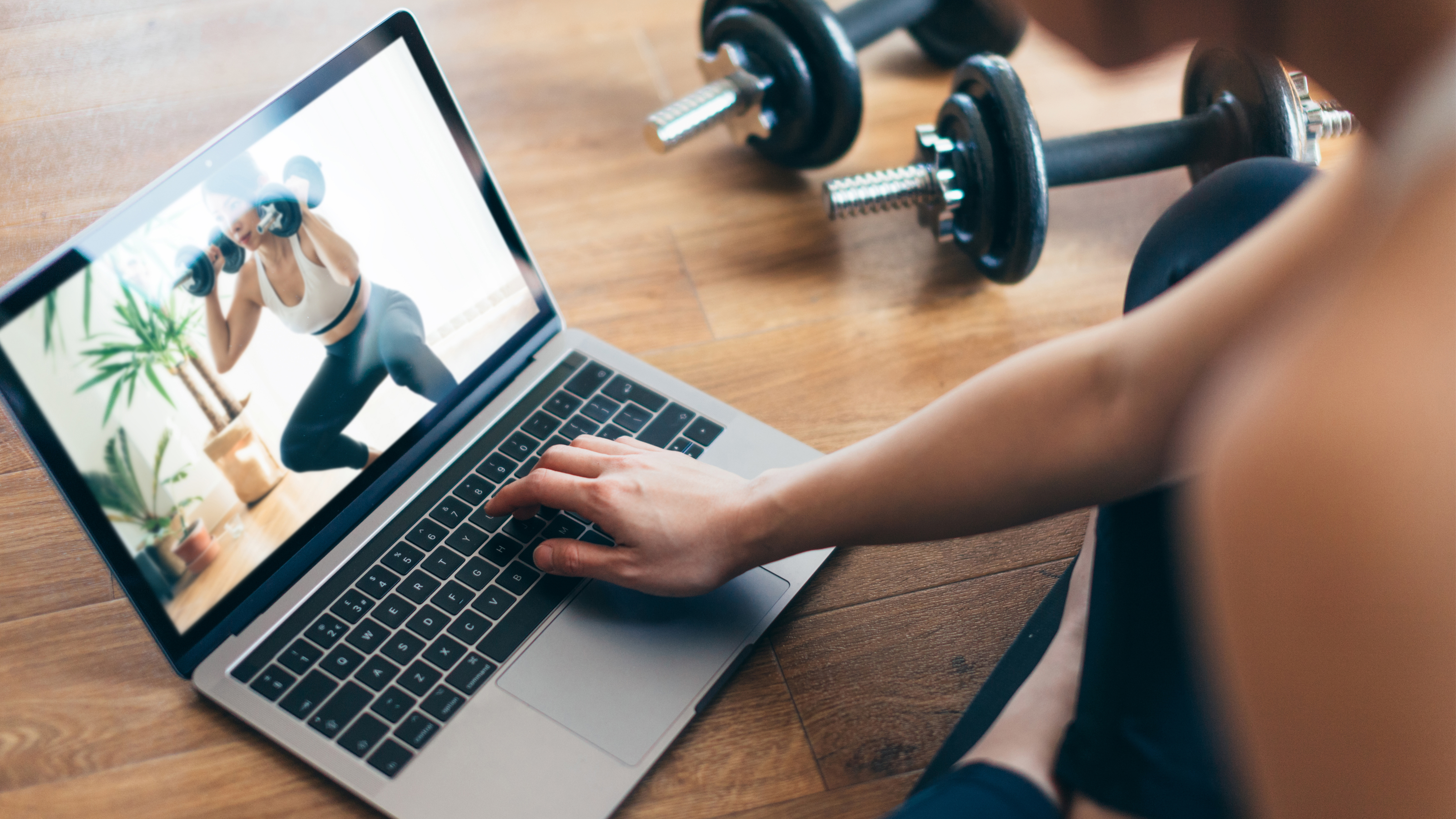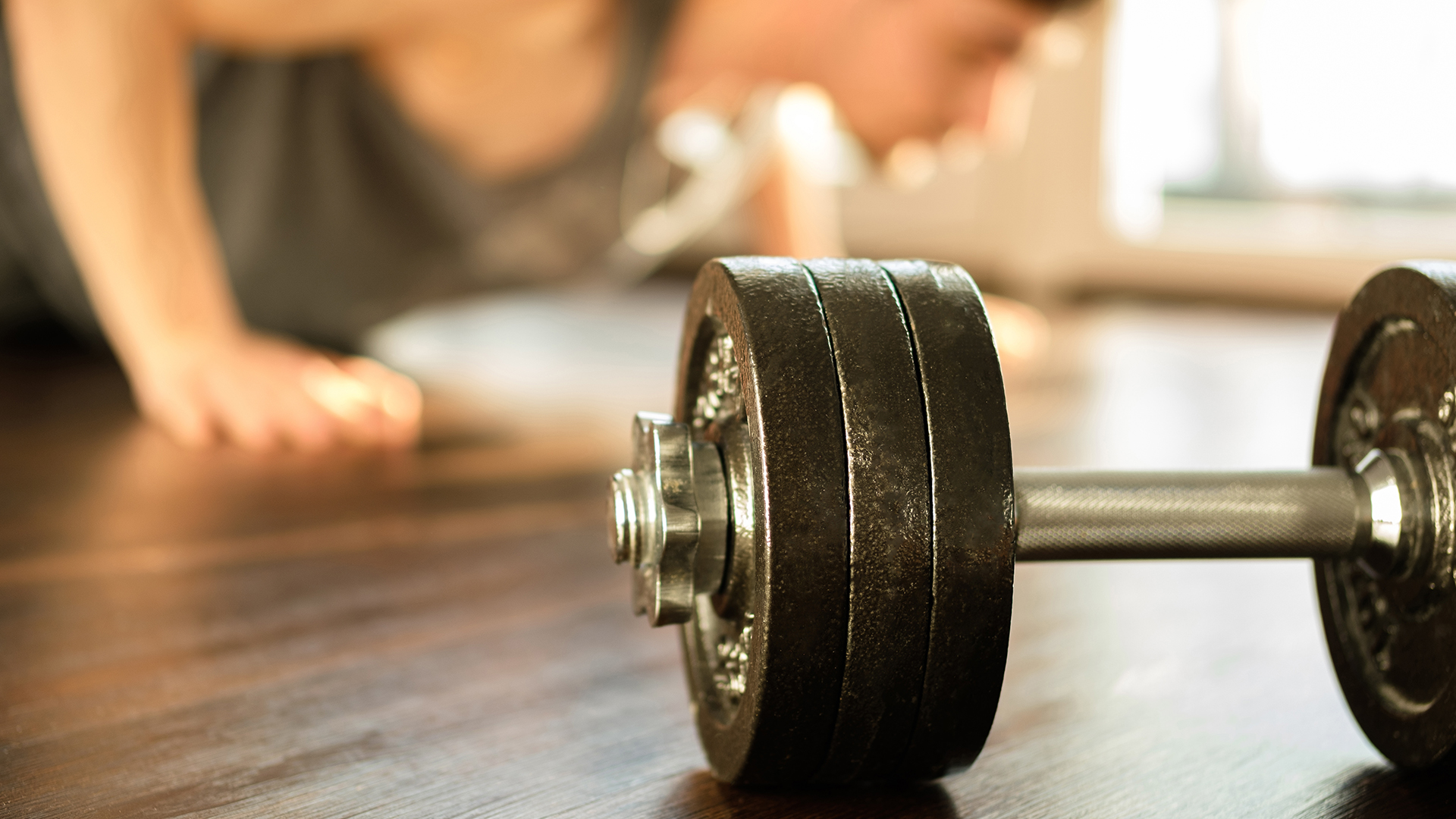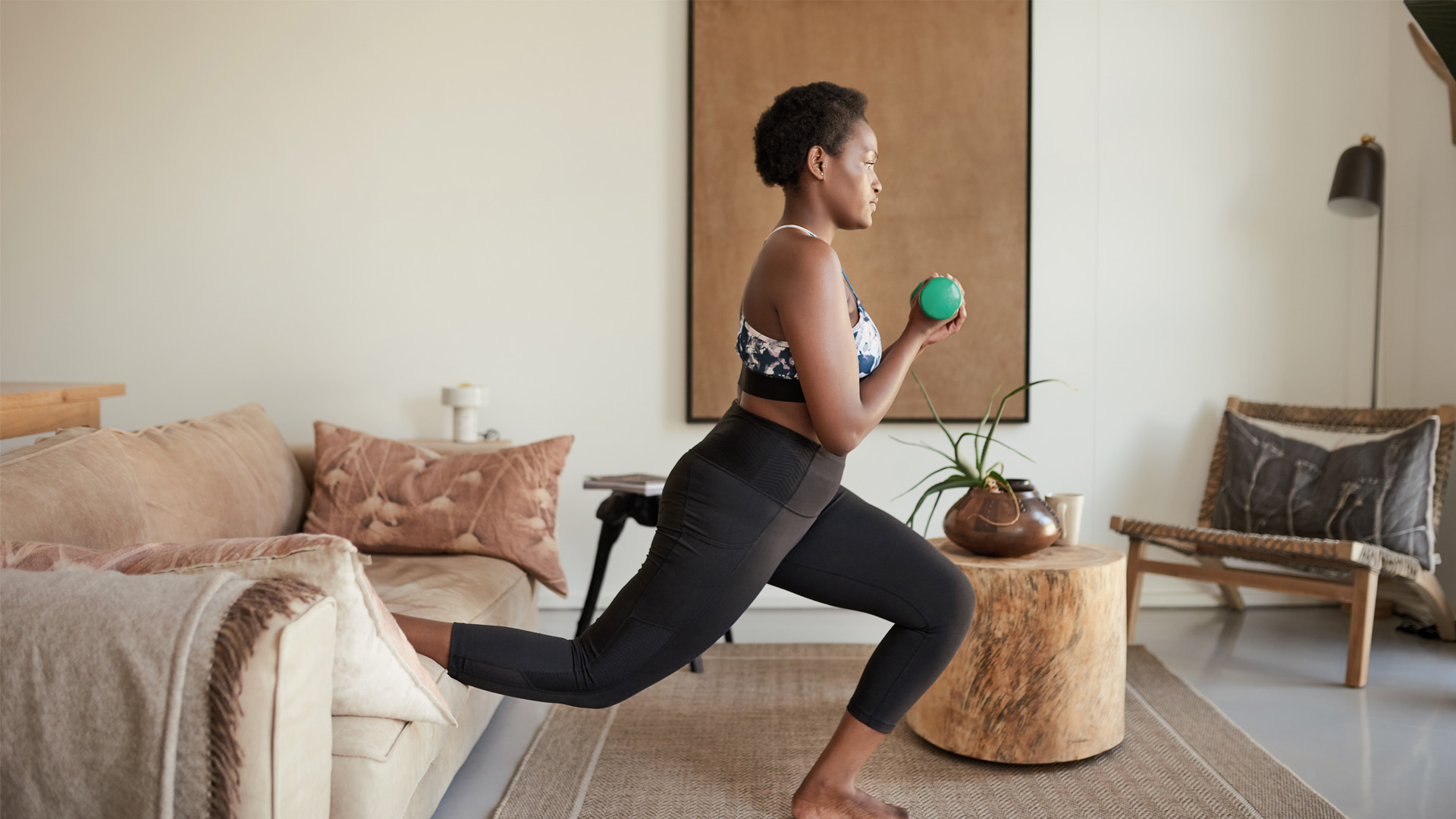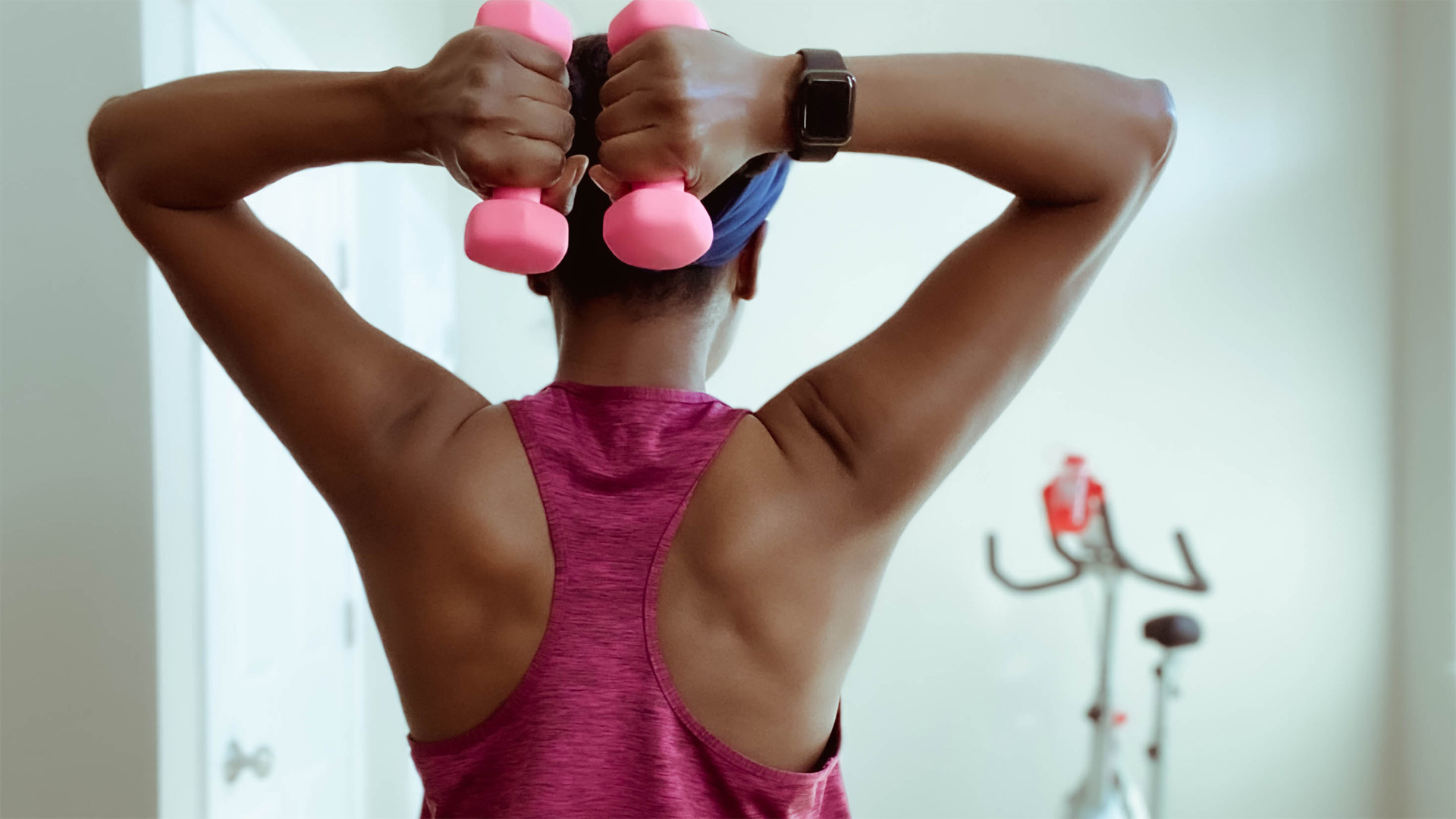Perfect your home weights training
Perfect your home weights training with these expert tips on equipment and form.

Sometimes working out at home just makes sense. Whether you're too tired to make your way to the gym or don't have the time to travel, having a home weightlifting routine can help you stick to your fitness goals. Working out at home can be just as effective as a gym session, too, as long as you commit to a routine.
But while home training is convenient, we know it isn't always easy. That's why this guide will help to perfect your home weights training routine. We've interviewed experts about how to train like a pro from the comfort of your living room, and asked them what equipment you should be using. New to it all? Learn weightlifting for beginners first.
Benefits of home weights training

Weight training has several health benefits; it can speed up metabolism, improve your heart health and prevent bone loss in old age. Doing it at home is great because it's both cheap and convenient.
Weightlifting at home also means you can create a gym filled with the equipment you need. You'll never have to compromise by working with dumbbells that are the wrong shape or weight – and you'll never have to wait for a machine to become free.
As Charlotte Brown, a personal trainer and fitness expert at Innermost, says: "Weight training at home allows you to learn and progress more by not being afraid to make mistakes as you feel you don’t have the judgment of others."
Of course, weightlifting at home can come with a few downsides. For one thing, it requires you to take extra safety precautions, especially if you’re a beginner. Plus, you'll have fewer equipment options than you do at the gym.
What equipment do you need?

If you want to set up a decent home gym, you'll need a few basics. Here's what the pros recommend:
Space: You'll need a decent-size space for workouts. While this may not exactly count as "equipment," having ample space will be crucial for your comfort and safety if you plan on lifting weights at home.
Dumbbells: Every home weightlifting gym needs a few sets of dumbbells. Dumbbells are versatile weights that are great for a range of weightlifting exercises. We recommend investing in a variety of different dumbbells, so that you can mix up your routine and add additional weight as you get stronger. Or get some of the best adjustable dumbbells, which offer up to 15 different weight options in one compact package.
Kettlebell: In addition to dumbbells, invest in a kettlebell for targeting areas such as your hip flexors and quads in your lifting routine.
Resistance band: Adding one of the best resistance bands to your weightlifting routine at home is a great way to up the intensity and target deeper muscles when you lift.
Bench: You may want to invest in an adjustable bench if you have the space, so that you can improve the quality and variety of your home workout.
Mirror: This will be useful for checking on your form. You could also try filming yourself to notice bad postural habits.
Gloves: We recommend investing in a pair of training gloves for heavy lifting so that you protect your hands and wrists.
Mat: To stay safe (and protect your floors) while lifting at home, it's best to use a weightlifting mat. You might also want to pick up one of the best yoga mats for your post-exercise stretching, too.
How to perfect your form

Once you've got your equipment, you'll be ready to start lifting. However, when lifting at home, it's important to pay attention to your form. Poor form can result in injury, and as there will be no one there to check on you, you'll need to be vigilant.
Paul Jenkins, sports coach and founder of DNA Lean, says, "All weightlifting exercises are made of two different phases. One half is known as the concentric (positive) phase, where the skeletal muscle fibers (myofibrils) contract and shorten in length to lift the weight against the gravitational inertia. The other half is referred to as the eccentric (negative) phase of the movement, whereby the skeletal muscle fibers (myofibrils) expand and lengthen as the weight is lowered."
Jenkins explains that it's important to keep the weight controlled when it's going down. "Dropping weight with no control, and then attempting to lift it while inertia is acting upon it, can ‘twang’ the muscles and inadvertently lead to muscle strains or tears," he says.
He also recommends using an explosive, powerful movement on the way back up: "This type of explosive lifting targets the fast-twitch muscle fibers," he says.
On top of this, Brown says you should always warm up and keep your core engaged during workouts. Remember that posture is key when you're moving; it's better to go slow and steady with a lower weight than to pick up a weight that's too heavy for you.
Need some more guidance? Read through our piece on how to prepare for a workout for tips on getting in the zone. Or try out our weights at home workout if you need a new routine.
The takeaway
Lifting weights at home can be a great way to save time and money – plus, the privacy can even lead to a better workout. While there are plenty of pros to lifting at home, it's important that you pay close attention to the equipment you use and to your form when you're working out alone.
Sign up for the Live Science daily newsletter now
Get the world’s most fascinating discoveries delivered straight to your inbox.

Meg Walters is a freelance journalist and features writer. Raised in Canada and based in South East London, Meg covers culture, entertainment, lifestyle, and health. Her work has appeared in Cosmopolitan, i-D, Refinery29, Stylist, GQ, Shondaland, Healthline, HelloGiggles and other publications. When she's not writing, Meg is probably daydreaming about traveling the world, re-watching an old rom-com with a glass of wine, or wasting time on Twitter, where you can follow her @wordsbymeg.










